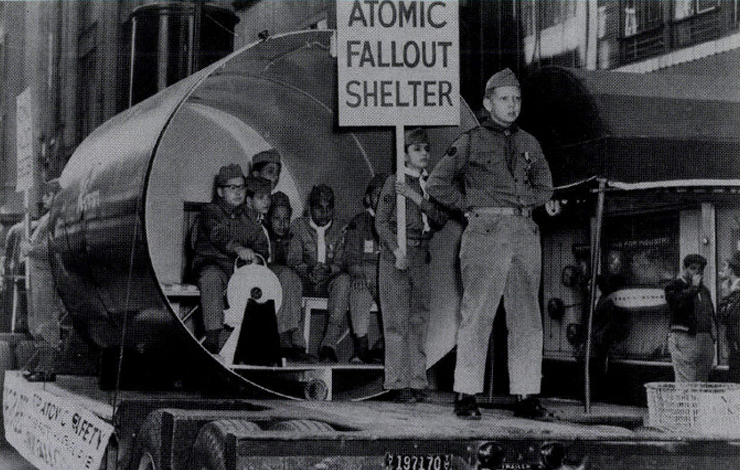
Back in 1983 I was living in San Francisco, and I read in the newspaper one day about a new documentary called The Atomic Café that had just opened. I was in the early stages of producing my first documentary that also dealt with atomic power, a film that would eventually evolve into Radio Bikini. Given the similar subject matter, I made a point of going to see The Atomic Café.
Walking out of the theater with my girlfriend that rainy night was a revelation. Here was a documentary that had me riveted in my seat like the best fiction. It was hip, ironic, hilarious, shocking, brimming with attitude and extraordinarily well crafted. Sadly, these were attributes not usually associated with documentary filmmaking. In those days, and unfortunately all too often still, most political documentaries tended to be too didactic, hagiographic and earnest—for my taste, at least. It was all too rare for a political documentary to transcend its subject matter and speak to a broader vision of the human condition. And that is what makes this film and others like it so genuinely subversive; I would put The Fog of War, Roger & Me and Bowling for Columbine in the same category (indeed, Michael Moore has spoken often about the influence of The Atomic Café on his work). The film's uniqueness, humor and accessibility allowed it to permeate the culture at large. "Duck and Cover" re-entered the lexicon, and a documentary classic was born.
The Atomic Café became one those documentaries that I would hold up as an example to which I might aspire. I believed then, and still do, that documentaries had the possibility of being as artistic and influential as the work of Kubrick, Coppola, Fellini, Godard and all of my other filmmaking heroes of that time. When I moved to New York in 1984, the makers of The Atomic Café became great friends and supporters of mine as I began my career as a documentary filmmaker.
Because it was so funny, and so damned good, The Atomic Café played in sold-out cinemas all over the country. Released at what was probably the high-water mark of the anti-nuclear movement, The Atomic Café quickly achieved a kind of cult status. One of the remarkable things about the film is that it's devoid of most of the standard documentary storytelling techniques. It employs no interviews and no narration, and, like HAL 1000 in Kubrick's 2001: A Space Odyssey, its central character is an inanimate object—in this case the atomic bomb. In fact, the film owes a debt in both tone and subject matter to another Kubrick classic, Dr. Strangelove.
On a most basic level, the film is an ironic compilation of 1950s government propaganda about the survivability of nuclear war. It's organized both chronologically and thematically (no easy feat!), beginning with the Trinity test in 1945 and ending with a stunning depiction of a nuclear holocaust constructed entirely from shots taken from these very same propaganda films. It is, quite simply, a brilliant piece of filmmaking and a true work of art. Twenty years later, it remains one of the best collage films ever made.
Robert Stone was nominated for an Oscar® for Radio Bikini. His latest feature documentary, Guerrilla: The Taking of Patty Hearst, which screened at Sundance and Berlin as Neverland, opens in theaters nationwide later this year.
